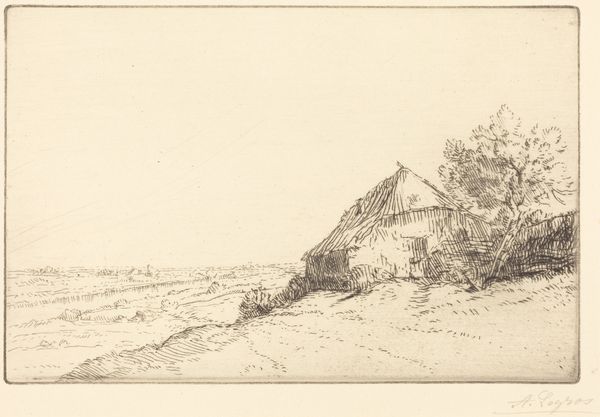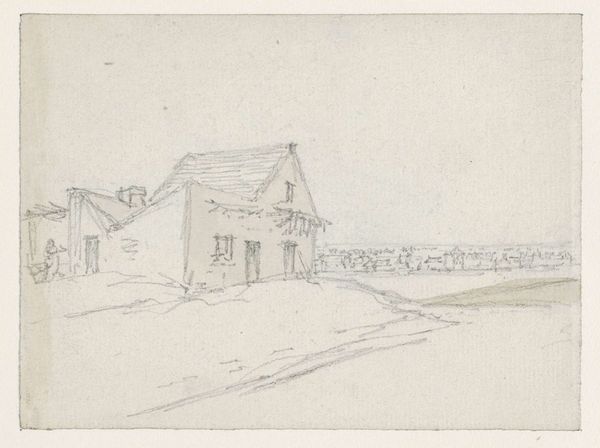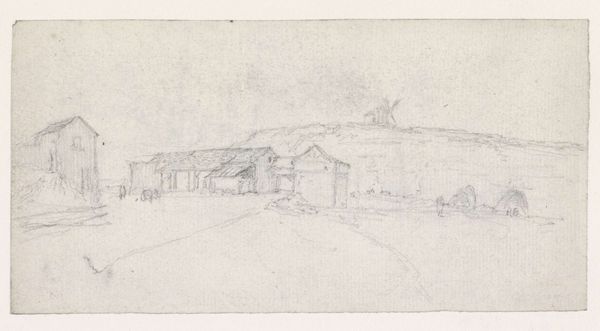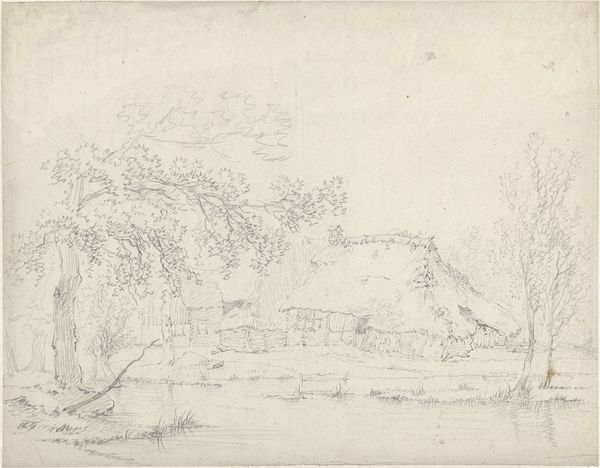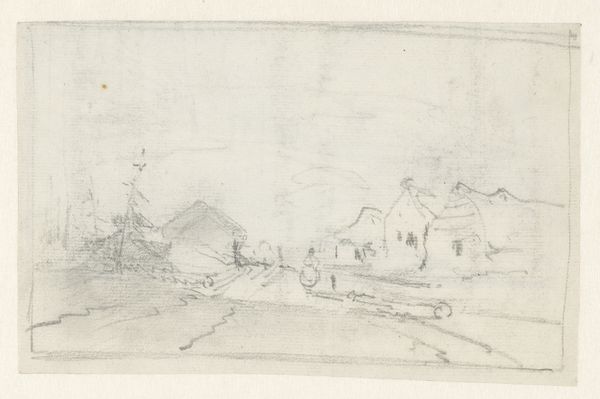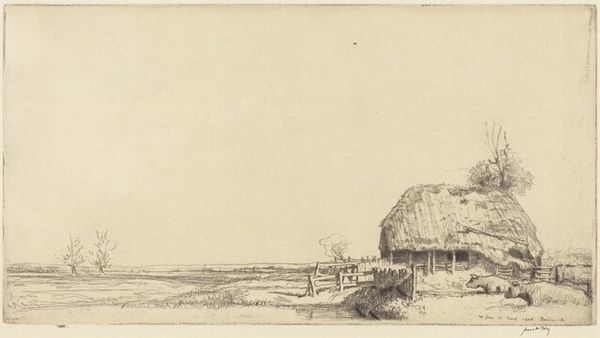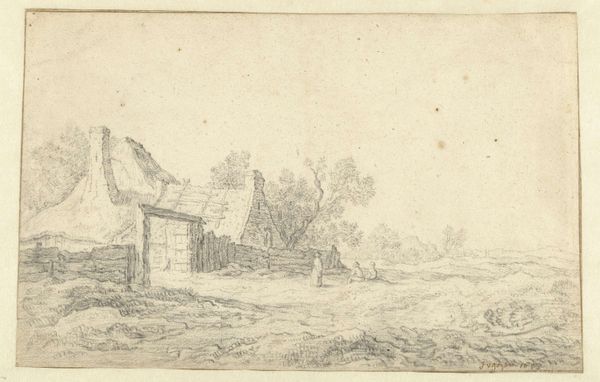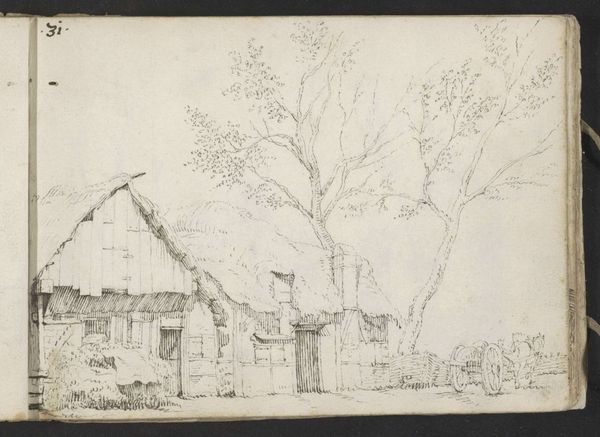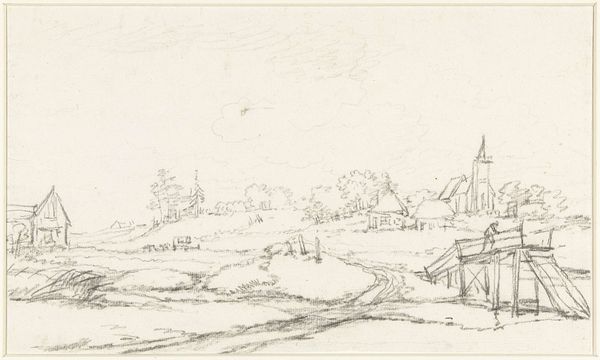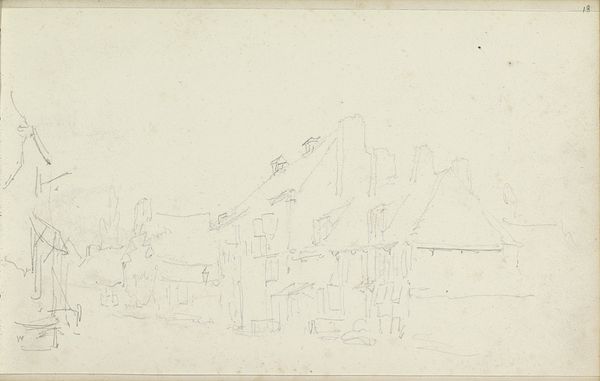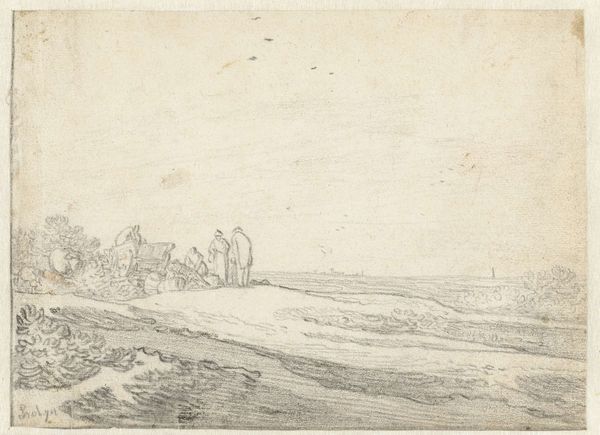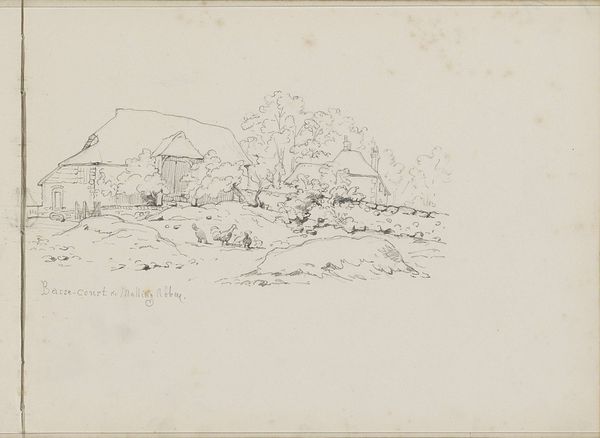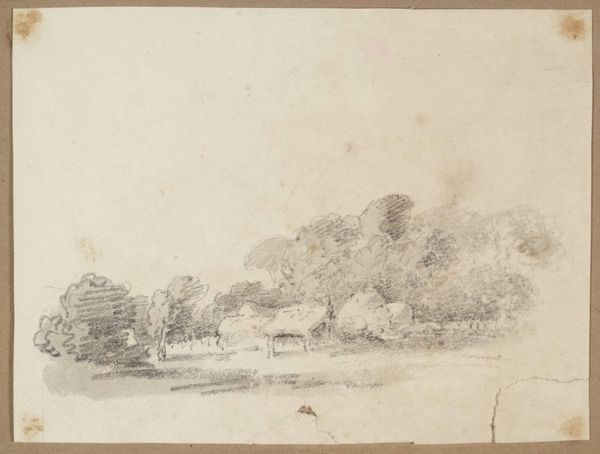
drawing, pencil
#
drawing
#
landscape
#
pencil
#
realism
Dimensions: height 100 mm, width 155 mm
Copyright: Rijks Museum: Open Domain
Curator: Here we have a pencil drawing titled "Boerderij met put," or "Farmhouse with Well," attributed to Georges Michel, likely created sometime between 1773 and 1843. Editor: My first impression is of stillness and solitude. It's rendered so delicately, almost ephemeral. The landscape feels hushed. Curator: Michel was deeply affected by the dramatic social shifts happening around him – the upheavals of the French Revolution, the rise of industrialization – all things that transformed the rural landscape he depicts here. He saw in these rustic scenes a kind of authenticity that was rapidly disappearing. Editor: The farmhouse becomes a symbol, then. A place of rootedness, a bulwark against the sweeping changes you mention. The well especially is an age-old symbol; a source, a primal link to sustenance. Curator: Absolutely. His technique is important too. Look at the subtle use of shading to create depth, even though it’s predominantly lines. He creates a sense of groundedness for a building about to vanish, as it is subtly but definitively fading from view, due to historical pressures and the erasure of agricultural land. Editor: You can really sense the precarity of it all. It’s faint but distinct. The overall image feels less like an objective portrayal of a farmhouse and more like an elegy. He draws the farmhouse delicately, creating a very specific atmospheric emotion in spite of, or perhaps because of, how minimal the work is. Curator: I agree. His work, including this particular rendering of an isolated farm, should also make us think about labor, and who historically occupies such a space. This farm has people dependent on it and it represents their work. It invites contemporary intersectional investigation of the historical forces which might put farmers in a specific region in vulnerable or compromised circumstances, perhaps for reasons related to their economic class or racialized status. Editor: Ultimately, this piece makes you think about how everyday life connects to our past through familiar symbolic markers. Curator: Yes, how spaces we may casually view have hidden meaning with great relevance for discussions about labor and class in our current socio-political climate.
Comments
No comments
Be the first to comment and join the conversation on the ultimate creative platform.
